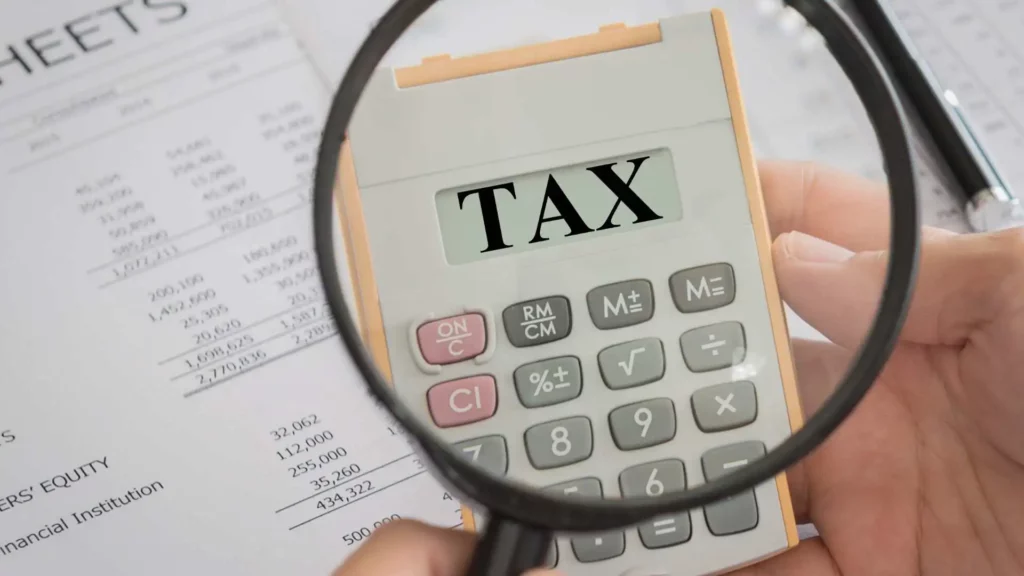The Child Tax Credit (CTC) is a crucial pillar of the US tax system, offering significant financial relief to families with children. It serves as a direct means of reducing tax burden or providing refunds, making it an invaluable resource for countless households.
Understanding the basics of the Child Tax Credit – including eligibility requirements and claiming procedures – is essential for families aiming to optimize their financial well-being. This article will concisely overview the Child Tax Credit, highlighting its importance and practical implications for families nationwide. Also, check out Beem, which offers an accurate and reliable free tax calculator to estimate state and federal taxes easily.
What is Child Tax Credit?
The Child Tax Credit is a tax advantage available to American taxpayers with children under 17 by the end of the tax year. For the 2024 tax year, which corresponds to the tax return filed in 2025, the maximum credit is $2,000 for each qualifying child. However, this amount is subject to income limitations and the Additional Child Tax Credit (ACTC) rules.
The Child Tax Credit begins to phase out for taxpayers with higher incomes. For married couples filing jointly, the credit decreases when adjusted gross income (AGI) exceeds $400,000. For all other filers (except heads of households), the phase-out begins at $200,000. The credit is reduced by $50 for each $1,000 that AGI exceeds these thresholds.
It’s important to note that the Child Tax Credit returned to its pre-2021 levels after the temporary expansions enacted during the COVID-19 pandemic. Those temporary increases, which raised the credit to as much as $3,000 per child and $3,600 for children under six, are no longer in effect. The current maximum credit is $2,000 per qualifying child.
How Does the Child Tax Credit Works?
The Child Tax Credit offers a straightforward way to lower your total tax bill by directly reducing the amount owed on a dollar-for-dollar basis. This credit provides more substantial savings than tax deductions that only reduce taxable income. You’ll need a Social Security number for the dependent child and must file Schedule 8812 (Credits for Qualifying Children and Other Dependents) and Form 1040 to claim it.
Eligibility hinges on several factors — the child must be under 17 at the end of the tax year, should have lived with you for more than half the year, should not have provided more than half of their financial support, and must meet citizenship or residency requirements.
Additionally, the child must depend on your tax return and should not have filed a joint return with a spouse except for claiming a refund of the estimated tax paid. These criteria ensure that the credit benefits those who have taken care of qualifying dependents throughout the tax year.
How Much is the 2024 Child Tax Credit?
Here are all the details on the 2024 child tax credit:
Child Tax Credit 2024 (Taxes Filed in 2025)
In 2024, the child tax credit has a maximum value of $2,000 per eligible dependent child. This amount is subject to income limitations. The entire $2,000 is available if your modified adjusted gross income (MAGI) falls at $400,000 or below for a married couple filing jointly and $200,000 or below for all other filers.
There’s also a refundable portion called the additional child tax credit, which can be up to $1,600. However, if your MAGI surpasses these thresholds, the credit diminishes by $50 for every $1,000 over the limit.
Child Tax Credit Expansion: What Could the New Tax Deal Mean for You?
The following information about proposed changes to the Child Tax Credit is for informational purposes only. These changes did not become law and are not currently in effect. Any discussion of potential future tax law changes should not be considered tax advice.
The proposed child tax credit expansion promised temporary relief for lower-income families and those who typically miss out on its full benefits. Under the plan, the maximum refundable amount per child would gradually increase, starting at $1,800 for 2023 and then to $2,000 by 2025.
Moreover, changes in the calculation method would ensure a fairer distribution of the credit, allowing parents to account for the number of children they have. To qualify for the refundable portion, filers must earn at least $2,500, with options to use current or prior year’s income in 2024 and 2025.
The update will likely be reflected in significant tax software programs. Moreover, the base child tax credit of $2000 per qualifying child would be adjusted for inflation in 2024 and 2025, potentially increasing by approximately $100 annually.
Child Tax Credit 2024
In the 2024 tax year, which pertains to tax returns filed in 2025, the child tax credit has a maximum value of $2,000 per eligible child. The refundable portion of this credit is available through the Additional Child Tax Credit (ACTC), up to $1,700. However, the base credit and the ACTC are subject to income limitations and specific eligibility rules. Consult IRS.gov for details. Moreover, the benefit gradually decreases for parents with higher incomes.
How has the Child Tax Credit Changed Over the Years?
The Child Tax Credit has undergone significant changes, including temporary expansions. One notable period of change occurred with the American Rescue Plan (ARP) in 2021. For that tax year only, the ARP temporarily increased the maximum credit to $3,600 for children under six and $3,000 for children between 6 and 17. Before 2021, the credit is currently capped at $2,000 per eligible child, and children must be under 17 to qualify.
Notably, the expanded credit became fully refundable in 2021, allowing eligible families to receive a refund even if they owed no federal income tax. The age limit was also temporarily adjusted but has reverted to under 17. Income requirements also changed with the ARP, but these changes were temporary.
For instance, now, children need to be under 18 at the end of the year to qualify, and income limitations have been adjusted to provide increased credit to families earning less than $75,000 for single filers, $112,500 for heads of household, and $150,000 for joint filers. Beyond these thresholds, the credit phases out gradually. These changes aim to provide more significant financial support to families, particularly those with lower incomes, through the Child Tax Credit.
Requirements: Who Qualifies for the Child Tax Credit?
To qualify for the child tax credit for the 2024 tax year (returns filed in 2025), taxpayers and their qualifying child must meet several criteria:
To qualify for the child tax credit in the 2024 tax year, which applies to tax returns filed in 2025, taxpayers and their qualifying child must meet several criteria. The child should be under 17 by the end of 2024. The claimed child must be your son, daughter, stepchild, foster child, sibling, half-sibling, step-sibling, or a descendant of any of these individuals (such as a grandchild, niece, or nephew).
You must have provided at least half of the child’s financial support during the 2024 tax year. The child must be a US citizen or US resident alien and should possess a valid Social Security number. You must be able to claim the child as a dependent, and they cannot file a joint tax return except for specific refund purposes.
With some exceptions, the child must have lived with you for at least half the year, meaning more than half of 2024. Finally, there are income limitations for parents or caregivers claiming the credit. If your income exceeds a certain threshold, the credit is gradually reduced until it is phased out completely.
Additional Child Tax Credit
The Additional Child Tax Credit (ACTC) is related to the refundable portion of the Child Tax Credit (CTC). It’s important to understand that the ACTC is not simply for those whose tax liability is less than the CTC. Instead, it’s designed to provide a refundable amount even if your tax liability is zero after applying the non-refundable portion of the CTC.
To claim the ACTC for the 2024 tax year (filed in 2025), you must meet the income and dependent criteria for the CTC., which are the same as those outlined for the basic CTC. In addition to meeting the CTC requirements, there are further requirements for the ACTC:
Neither you nor your spouse (if filing jointly) can exclude foreign-earned income using Form 2555 or Form 2555-EZ.
If filing jointly, you (or your spouse) must have earned income of at least $2,500. Earned income includes wages, salaries, tips, and net earnings from self-employment. It does not include passive income like interest, dividends, or pensions.
The IRS calculates your ACTC amount. The calculation can be complex and depends on several factors, including your income and the number of qualifying children. Consult IRS Publication 972 for detailed information on how the ACTC is calculated.
The maximum amount of the ACTC that can be refunded per qualifying child for the 2024 tax year is $1,600. Up to this limit, you can claim the ACTC even if you don’t owe any taxes.
How to Claim the Child Tax Credit in 2024?
To claim the child tax credit for the tax year 2024, file your federal tax return (Form 1040 or 1040-SR) by April 15, 2025, or by October 2025 with a tax extension. Along with your tax return, complete Schedule 8812 (Credits for Qualifying Children and Other Dependents), which helps determine your child tax credit amount and any potential partial refund through the additional child tax credit.
Many reputable tax software programs guide you through claiming the child tax credit with simple interview questions, streamlining the process, and even filling out forms automatically. Additionally, you may qualify for free tax software through the IRS’ Free File program if your income is below a certain threshold.
When Should you Expect your Child Tax Credit Refund?
If you’ve claimed the additional child tax credit on your tax return, it’s important to note that refunds that include the ACTC may be subject to additional processing time. The IRS aims to issue most refunds within 21 days for electronically filed returns. However, processing may take longer if your return has errors or requires further review Utilizing the IRS’ ‘Where’s My Refund’ tool can provide updates on the status of your refund.
Consequences of a Child Tax Credit Error
Errors on your tax form, especially regarding the child tax credit, can lead to various consequences, including refund delays or denial of the credit by the IRS. If your claim for the Child Tax Credit (CTC) is denied:
- You must repay any CTC amount you received in error and accrued interest.
- In case of an incorrect claim, you could face a penalty of up to 20% of the claimed credit amount.
- You may need to file Form 8862 (Information To Claim Certain Credits After Disallowance) before reclaiming the CTC.
State Child Tax Credits
Besides the federal child tax credit, several states like New York, Colorado, and California provide state-level CTCs. You might qualify for these additional credits when filing your state tax return. For more information, visit your state’s Department of Taxation website.
What is the $500 Credit for Other Dependents (ODC)?
The $500 credit for other dependents (ODC) is available if you have a child or relative who doesn’t fully meet the Child Tax Credit (CTC) criteria but qualifies as a dependent. This non-refundable credit can provide additional tax relief. The IRS offers a tool to help determine if your dependent qualifies for this credit.
Child Tax Credit vs Child and Dependent Care Credit
While they may sound similar, the ‘child and dependent care credit’ and the ‘child tax credit’ serve different purposes. The child tax credit provides tax relief for individuals with children, while the child and dependent care credit assists working parents or caregivers in offsetting expenses like day camp or after-school care. It’s important to note that these credits have separate rules and eligibility criteria.
History of the Child Tax Credit
The Child Tax Credit (CTC) was introduced in 1997 at $500 per qualifying child. Over time, it expanded to $1,000 per child in 2001 and became partially refundable. Further enhancements followed, with the maximum credit doubled to $2,000 per child in 2017 under the Tax Cuts and Jobs Act. The American Rescue Plan Act of 2021 temporarily expanded the CTC, increasing the maximum amount and making it fully refundable for tax year 2021. These changes were temporary and are no longer in effect.
When Will I Get My Tax Refund with the Credit?
If you file electronically and opt for direct deposit, the IRS aims to issue most refunds within 21 days. However, processing may take longer if your return has errors or omissions. Returns claiming the Additional Child Tax Credit may also experience delays. You can track your refund status using our tool.
Conclusion
The Child Tax Credit is a crucial family lifeline, adapting over time to offer increased financial relief. As legislative changes continue to shape its scope and impact, understanding eligibility and potential benefits remains essential for families dealing with the tax landscape. Use Beem to file your income taxes at the best rate and receive the most refund. Use Beem’s free Tax Calculator to quickly and accurately estimate your federal and state tax refund.






























